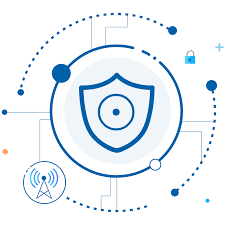Understanding 5G Network Security: Safeguarding the Next Generation of Connectivity
The rollout of 5G networks marks a new era in telecommunications, promising unparalleled speed, reduced latency, and the ability to connect billions of devices worldwide. This transformation is expected to drive innovation across industries, from autonomous vehicles to smart cities, and healthcare. However, with this leap forward in technology comes a critical challenge: 5G network security. As 5G becomes the backbone of our digital infrastructure, ensuring its security is paramount. In this blog, we'll delve into the key aspects of 5G network security, the challenges it presents, and strategies to safeguard this vital technology.
The New Security Landscape of 5G Networks
5G networks differ fundamentally from their predecessors. While previous generations of cellular networks were primarily centralized and hardware-driven, 5G introduces a more decentralized and software-based architecture. This shift, while enabling greater flexibility and efficiency, also creates new security vulnerabilities.
Key Security Challenges in 5G Networks:
Expanded Attack Surface: The sheer volume of devices that 5G can support—ranging from smartphones to IoT sensors—significantly increases the attack surface. Every connected device is a potential entry point for cyberattacks, making the task of securing the network more complex.
Decentralized Network Architecture: 5G networks rely on edge computing, where data processing occurs closer to where it is generated rather than being funneled through a central data center. While this enhances performance, it also makes monitoring and securing the network more challenging due to the distributed nature of the infrastructure.
Network Slicing Risks: One of the key features of 5G is network slicing, which allows multiple virtual networks to be created on a shared physical infrastructure. While this enables customized services for different users, it also raises security concerns, as a breach in one slice could potentially affect others.
Increased Use of Software: 5G networks rely heavily on software for their operation, including virtualization and cloud technologies. This dependency on software opens up new avenues for attacks, such as the exploitation of software vulnerabilities and the risk of supply chain compromises.
Threats from Advanced Persistent Threats (APTs): The strategic importance of 5G makes it a target for nation-state actors and other sophisticated attackers. These groups may attempt to infiltrate networks for espionage, data theft, or to cause disruption on a large scale.
Strategies for Strengthening 5G Network Security
Given the heightened risks associated with 5G networks, it is crucial to implement comprehensive security strategies that address these challenges. Here are some key approaches to enhance 5G network security:
Adopt a Zero Trust Security Model: In a Zero Trust architecture, no device or user is trusted by default, even if they are inside the network perimeter. This approach involves continuous verification of each entity's identity and activity, helping to mitigate the risk of unauthorized access.
Implement End-to-End Encryption: Encrypting data as it moves through the network ensures that even if an attacker gains access to the network, the information remains protected. End-to-end encryption is particularly important in 5G, where data travels across various devices and infrastructure.
Enhance Network Visibility and Monitoring: Given the decentralized nature of 5G networks, maintaining visibility over the entire network is challenging but essential. Advanced monitoring tools that leverage AI and machine learning can help detect anomalies in real-time, allowing for quicker responses to potential threats.
Secure Network Slicing: As network slicing becomes more prevalent, it is crucial to ensure that each slice is securely isolated from the others. This can be achieved through rigorous access controls, encryption, and regular security assessments to detect and mitigate vulnerabilities.
Collaboration and Information Sharing: Cyber threats are constantly evolving, making it essential for stakeholders across the 5G ecosystem to collaborate and share threat intelligence. Partnerships between telecom operators, equipment manufacturers, governments, and cybersecurity experts can lead to more robust defenses against emerging threats.
Invest in Secure Software Development: Since 5G relies heavily on software, ensuring that this software is secure from the outset is vital. This involves adopting secure coding practices, conducting regular vulnerability assessments, and staying vigilant about potential supply chain risks.
The Path Forward: Building a Secure 5G Future
The transition to 5G networks is a significant step forward, offering transformative benefits for industries and consumers alike. However, the security challenges that come with this transition cannot be overlooked. By adopting a proactive approach to 5G network security—focusing on zero trust, encryption, monitoring, and collaboration—businesses and governments can build a more secure digital infrastructure.
As we move further into the 5G era, security will be the cornerstone of unlocking the full potential of this technology. By addressing the unique challenges posed by 5G network security, we can ensure that the benefits of this new generation of connectivity are realized safely and securely.




Comments
Post a Comment